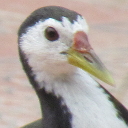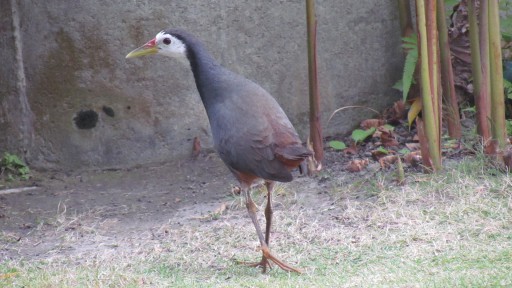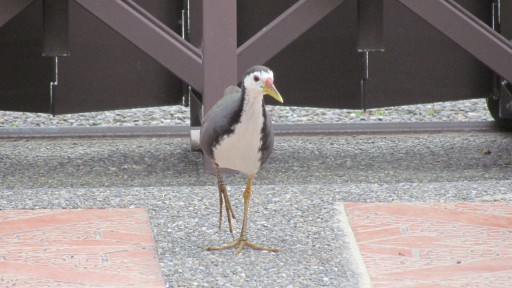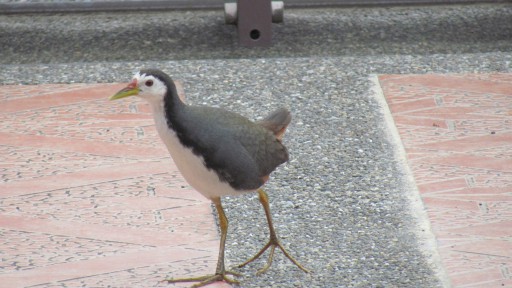“Where could the fish go?” I was quietly wondering after numerous attempts at counting the koi fish in the fish tank located in one corner of the front yard. It’s a small concrete vessel, about 80 centimetres tall and with a diameter of about one metre. I keep a few colourful koi in there; they are lovely – always keen to emerge from the depth and open their mouths whenever the feeder appears in their sight. I had three of them for several years, but a few months ago I added a dozen more, mostly small ones. Unfortunately, some of them disappeared shortly afterwards without a trace and I had no idea what happened to them. Until this week.
The prime suspect is now this lovely White-breasted waterhen (Amaurornis phoenicurus), a large Asian waterbird which I spotted one day wondering about the garden. I observed the animal from behind the curtains, taking a few photographs in the process. It spent a bit of time foraging under the plants before jumping onto the edge of the fish tank, investigating the content hungrily. This time the bird came off empty-mouthed; there are no longer any small fish in the tank and the larger ones are clever enough to keep far below the surface when spotting a dangerous-looking beak above!
Belonging to the Rallidae family, the White-breasted waterhen is a large bird, measuring up to 33 centimetres from head to tail. It usually keeps on the ground, enjoying the thick vegetation in the vicinity of the irrigation trenches that traverse the nearby farmlands. I have observed it a few times from a distance, but it’s a shy bird and it always disappears quickly at the sight of a human. I thought it’d feed on frogs and toads that are plentiful in the area, but according to the linked Wikipedia article, they also take insects and even seeds. One other interesting thing I learnt while looking for information about the white-breasted waterhen: in Malay the bird is called “rwak-rwak”, with the name representing the animal’s loud and unmistakable call.
(This page has been viewed 250 times.)




